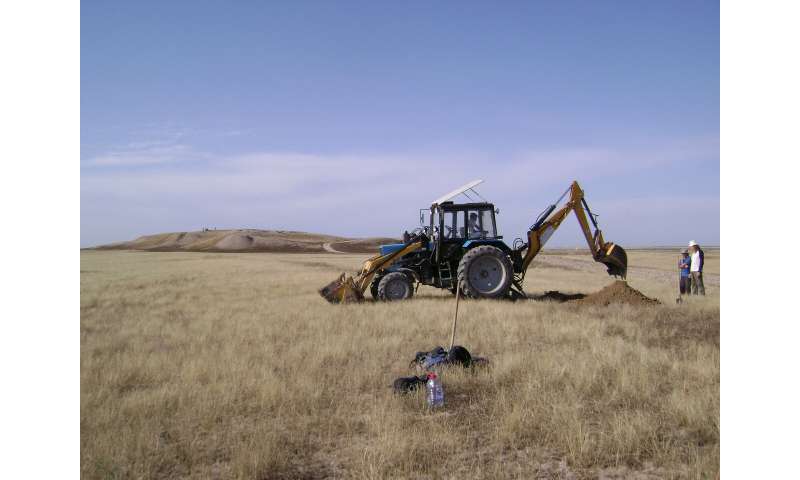by Bob Yirka , Phys.org

An international team of researchers has found evidence in ancient river sediments that suggest climate change, not a Mongol invasion, ultimately doomed the ancient Transoxania civilization. In their paper published in Proceedings of the National Academy of Sciences, the group describes how they analyzed sediment samples from rivers and abandoned canals in the area and what they learned by doing so.
Transoxiana is the ancient name of a civilization that once lived in what is now part of Kyrgyzstan, Uzbekistan and Tajikistan—it was situated around the Otrar oasis in Central Asia. Prior research has suggested that the civilization was never able to recover from Mongol invasions in the early part of the 13th century. In this new effort, the researchers suggest the fall of the Transoxania civilization was much more complicated than that, and that there were likely a variety of factors involved.
Suspecting that climate change may have played a role, the researchers collected sediment samples from dry canals that had been used by the people of Transoxania. The canals had been built to corral floodwater from the Amu Darya and the Syr Darya rivers and to use it for irrigation. The researchers tested the samples using optically stimulated luminescence and radiometric dating to determine the time period during which the canals had been abandoned. They then conducted the same kinds of tests on river sediments in the area which gave them a history of river flow.
The researchers were able to see changing river flows exerted a negative impact on irrigation efforts, which would have made it difficult for the Transoxania people to feed themselves. Sadly, the drought came before and during the time when the Mongols arrived, making it almost impossible for the people in the area to defend themselves and survive—at least in the near term. The researchers found that after the Mongols had moved on, the rains returned for a period of time. The researchers believe that the people who lived there before the invasion recovered to some extent. But another drought ultimately led to migration to more hospitable locations.
More information: A hydromorphic reevaluation of the forgotten river civilizations of Central Asia, Proceedings of the National Academy of Sciences (2020). www.pnas.org/cgi/doi/10.1073/pnas.2009553117
(Source: https://phys.org/news/2020-12-river-sediment-history-climate-mongol.html)